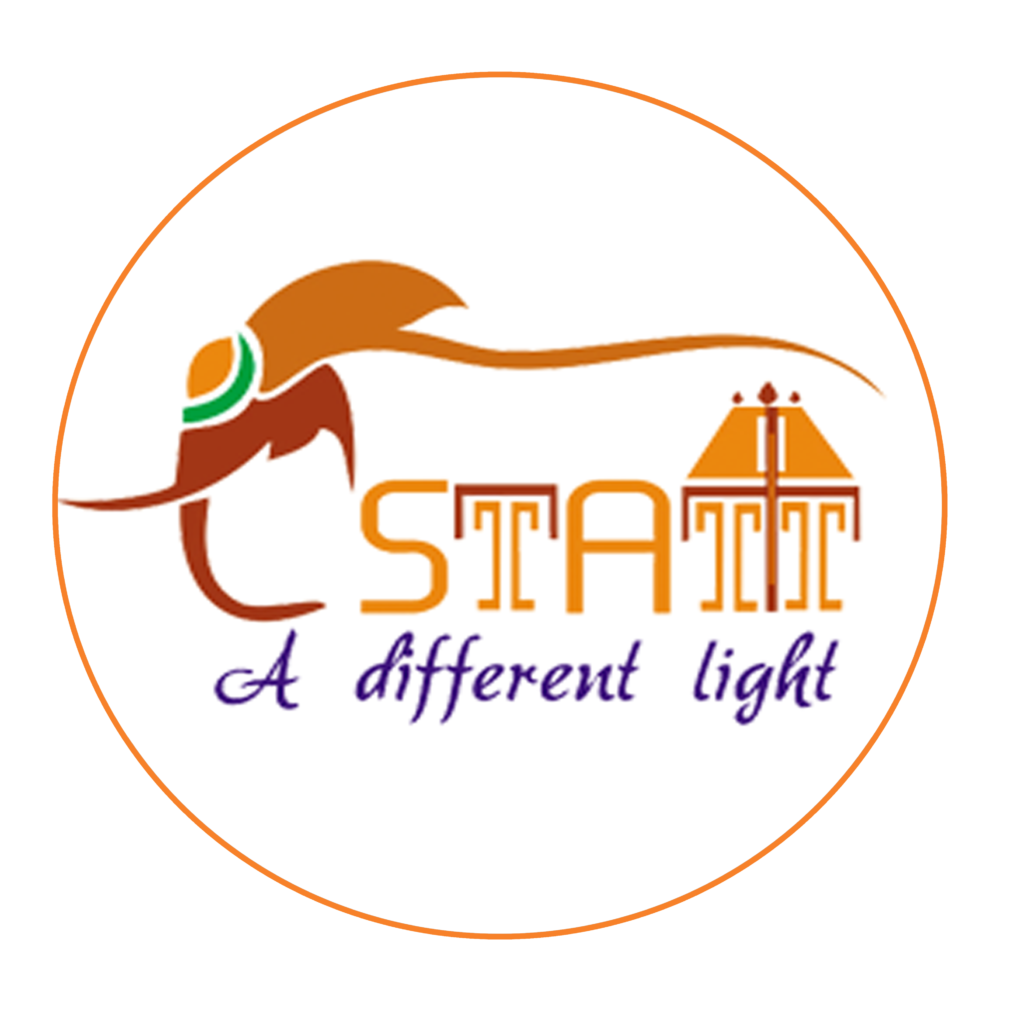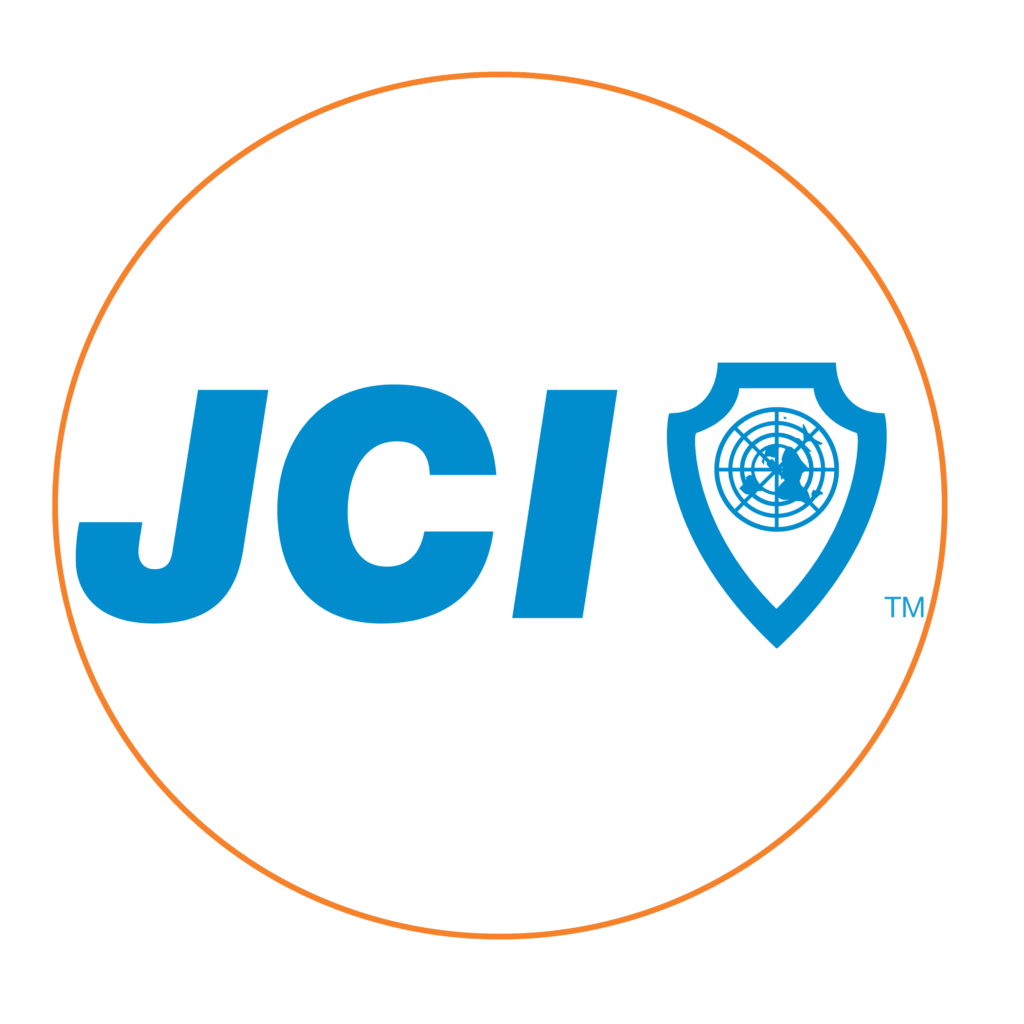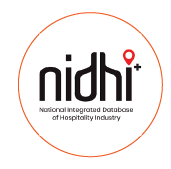
South India's No. 1 Travel Agency ✨
💱 Currency
Euro (Slovakia, Slovenia, Estonia, Latvia, Lithuania) Polish Zloty (PLN)
🗣️ Languages
Each country has its own official language (Polish, Hungarian, Romanian, etc.)
🌤️ Climate
-5°C to 30°C (varies by season and country; winters are cold, summers are warm and pleasant)
📅 Best Season
April – June (Spring) September – October (Autumn)
🛡 Must-Know Travel Tips for Visiting Eastern Europe
- 🏧 ATMs are common in cities; carry some cash for rural areas and markets. Use official bank ATMs.
- 💳 Cards are widely accepted in urban areas, but cash is preferred in villages and local shops.
- 🏦 Banks operate Mon–Fri (9 AM–4 PM); ATMs work 24/7 but may charge foreign card fees.
- 🍷 Drinking age is 18. Alcohol is easily available; try local wines and spirits.
- 🤝 Dress modestly at religious or rural sites. Polite greetings are appreciated.
- 💰 Bargaining is rare in stores but common at flea markets—always ask first.
What Is Balkan Europe Famous For? – About Balkan Europe Explained
Balkan Europe, often referred to as the Balkans, is a captivating region in southeastern Europe comprising countries such as Croatia, Serbia, Bosnia and Herzegovina, Montenegro, Albania, North Macedonia, Kosovo, Bulgaria, Romania, and Greece. This diverse region is renowned for its rich historical tapestry that weaves together Roman, Byzantine, and Ottoman influences. Travelers are drawn to its breathtaking natural wonders, from the glistening Adriatic Sea and the dramatic Dinaric Alps to tranquil lakes and scenic rivers.
What sets the Balkans apart is their authentic cultural experience, unspoiled by mass tourism. You’ll encounter charming old towns, hospitable locals, and a unique blend of cultures, languages, and religions. It’s a land where affordability meets adventure, and where UNESCO World Heritage Sites like Dubrovnik, Ohrid, and Rila Monastery offer glimpses into the past. Many travelers exploring this enchanting region opt for Balkan Europe tour packages, which provide a convenient and well-curated way to experience its highlights without the hassle of planning every detail independently.
Eastern Europe Tour Packages
Most Chosen Eastern Europe Tour Plans by Our Happy Customers
What Is Eastern Europe Famous For? – About Eastern Europe Explained
Spanning from the Baltic Sea to the Black Sea, Eastern Europe is a region steeped in rich cultural traditions and centuries of complex history.It includes countries such as Poland, Hungary, Romania, Bulgaria, Czech Republic, Slovakia, and the Baltic states like Latvia and Lithuania, among others. The region is renowned for its fairy-tale castles, medieval towns, orthodox cathedrals, vibrant folk traditions, and diverse landscapes that range from the Carpathian Mountains to the Danube River Basin.
Eastern Europe stands out for its genuine charm and untouched cultural essence.Unlike Western Europe, it is often less commercialized, offering travelers a raw, immersive experience. Visitors are captivated by the baroque architecture in Prague, the Ottoman influences in Bosnia, and communist-era relics in Albania and Bulgaria, all coexisting harmoniously with lively modern cities. Don’t miss the charming Old Towns of Krakow, Tallinn, and Vilnius, the famous thermal baths of Budapest, Romania’s colorful painted monasteries, or a breathtaking drive along the Transfăgărășan Highway on the heart of the Carpathians.traditional wooden churches found in Slovakia and Ukraine.
Many Eastern Europe tour packages focus on these iconic sites, ensuring that travelers experience the perfect mix of history, nature, and cultural immersion in a single Eastern Europe tour plan.
Balkan Europe Tour Packages
| High season | May to September (Late Spring to Early Autumn) |
|---|---|
| Iconic Attractions | Dubrovnik Old Town Lake Bled Mostar Bridge Ohrid Lake Belgrade |
| Popular Activities | Island hopping in the Adriatic, Exploring medieval towns and fortresses, Wine tasting in countryside vineyards, Hiking in the Dinaric Alps, Cruising the Danube or the Bay of Koto |
| Visa | Schengen Visa required for most countries like Slovenia, Greece, Croatia, and Bulgaria Non-Schengen countries (e.g., Serbia, Montenegro, Albania, North Macedonia, Bosnia) allow visa-free or eVisa for Indian citizens (check latest rules) |
| National Animal | Serbia: Grey Wolf Albania: Golden Eagle |
| National Flower | Slovenia: Carnation Bulgaria: Rose (celebrated during the Rose Festival) |
| Famous Food | Ćevapi (grilled meat), Burek (savory pastry), Moussaka, Sarma (stuffed cabbage rolls), Shopska Salad, Goulash, Ajvar, Grilled seafood, Rakija (fruit brandy), Baklava, Greek Yogurt with honey and nuts |
Top 10 Reasons Why Tourists Love Visiting Balkan Europe
Balkan Europe continues to rise as one of the most beloved regions for global travelers. First, it offers exceptional value for money. You can explore ancient towns, dine well, and stay comfortably at a fraction of the cost compared to Western Europe. The landscapes are equally captivating, ranging from alpine lakes and deep canyons to sun-drenched beaches. Many travelers opt for well-curated Balkan Europe tour packages that combine historical exploration, natural beauty, and cultural immersion into one unforgettable experience.
Whether you’re a solo explorer, couple, or family, there’s a Balkan Europe tour plan to suit every travel style and budget. With options ranging from adventure tours and heritage walks to beach getaways and food trails, the region promises something for everyone. These thoughtfully designed itineraries help travelers make the most of their journey while navigating through diverse cultures and scenic destinations with ease.
When Is the Best Time to Visit Balkan Europe for Travel?
The best time to visit Balkan Europe largely depends on your personal interests and preferred travel experiences. Spring (April to June) is one of the most pleasant seasons for sightseeing, offering mild temperatures, fewer tourists, and vibrant natural beauty. Blooming flower fields, especially in Bulgaria’s Rose Valley, attract both nature lovers and photographers. This period also coincides with Easter festivities in Orthodox countries, giving visitors a unique cultural insight through religious processions, traditional foods, and local celebrations.
Summer (July and August) is the high season, ideal for those seeking sun-soaked beaches, island hopping, and lively nightlife. Coastal areas in Croatia, Montenegro, and Albania become major tourist hubs, offering crystal-clear waters, beach festivals, and sailing tours along the Adriatic. However, it also brings the highest tourist traffic and peak prices—so early booking is essential for accommodation and Balkan Europe tour packages during this time. For Indian travelers, it’s advisable to pack light clothing, sunscreen, and stay hydrated during hot midday hours.
Autumn (September to October) is perfect for travelers seeking a balance of good weather and peaceful exploration. The golden fall foliage across Romania’s Transylvanian forests, Serbia’s countryside, and North Macedonia’s lakes creates a scenic backdrop for hiking and photography. This season is also grape harvest time, making it ideal for wine tourism in regions like Melnik (Bulgaria) and Dealu Mare (Romania), where wine-tasting tours and vineyard visits are often included in tailored Balkan Europe tour plans.
Winter (December to February) transforms the Balkan highlands into enchanting snow-covered retreats. Ski resorts such as Kopaonik in Serbia, Bansko and Borovets in Bulgaria, and Poiana Brașov in Romania offer affordable winter sports opportunities, including skiing, snowboarding, and snowshoeing—perfect for Indian travelers wanting a European snow experience without the high cost of Alpine destinations. Christmas markets in cities like Zagreb, Ljubljana, and Sibiu add festive charm with local crafts, food stalls, and lights.
What Are the Best Things to Do in Balkan Europe?
Travelers can enjoy a wide variety of activities throughout the Balkans. A cruise along the Adriatic Sea departing from coastal cities like Split or Dubrovnik is a magical experience. Adventurers can hike through national parks to reach scenic spots like Black Lake in Montenegro or Lake Bled in Slovenia. No trip to Romania is complete without visiting Bran Castle, famously tied to the myth of Count Dracula. Many Balkan Europe tour packages include these iconic sites to ensure a well-rounded and memorable trip.
When preparing your Balkan Europe tour plan, consider including cultural festivals, nature trails, beach stays, and spiritual retreats to diversify your experience. Tour packages often highlight hidden gems alongside major landmarks, providing a deeper connection with the region. Whether you’re interested in history, nature, nightlife, or gastronomy, the Balkans offer an exciting palette of activities that go beyond the typical European itinerary.
What Food Is Balkan Europe Known For? – A Guide to Balkan Cuisine
Balkan cuisine is hearty, flavorful, and deeply influenced by Ottoman, Mediterranean, and Central European culinary traditions. One popular dish is ćevapi, which consists of grilled minced meat rolls served with fluffy flatbread and raw onions, often accompanied by a side of ajvar or sour cream. Burek, a delicious flaky pastry filled with cheese, meat, or spinach, is a staple in bakeries across the region and is often enjoyed as a quick breakfast or street snack.
Sarma, or cabbage rolls stuffed with minced meat and rice, is a beloved comfort food traditionally served during family gatherings and festivals. This smoky red pepper and eggplant spread, known as Ajvar, is a staple across the Balkans and complements meats and breads alike.For dessert, baklava, with its rich layers of phyllo dough, nuts, and honey syrup, is commonly found throughout the southern Balkans, especially in Bosnia, Albania, and North Macedonia.
The shopska salad, made with tomatoes, cucumbers, onions, peppers, and topped with crumbly white cheese, is a refreshing and colorful accompaniment to many meals. Greek-style moussaka, a baked casserole of eggplant, potatoes, minced meat, and béchamel sauce, is popular not only in Greece but also in Bulgaria and Serbia. In coastal areas, particularly in Croatia, Montenegro, and Albania, fresh seafood such as grilled calamari, mussels in wine sauce, and octopus salad feature prominently on restaurant menus.
Balkan beverages include strong fruit brandies like rakija (made from plums, grapes, or apricots) and slivovitz, often offered as a welcome drink in homes or rural guesthouses. In addition, local wines from regions like North Macedonia, Serbia, and Romania are gaining international acclaim. Craft beer is also on the rise, especially in urban centers like Belgrade, Sofia, and Bucharest.
Vegetarian travelers will find an array of plant-based dishes such as Prebranac (baked beans), gibanica (cheese pastry), stuffed peppers, and vegetable casseroles. Cheese lovers will rejoice in the Balkans, where varieties like kashkaval, feta, and sirene are used liberally in everyday cooking. Indian tourists looking for familiar flavors may find Balkan cuisine quite approachable due to its use of spices, slow-cooked methods, and shared love for breads, pickles, and tangy condiments.
Balkan Europe Tour Packages
| Dubrovnik (Croatia) | Old Town Walls, Stradun Promenade, Fort Lovrijenac, Game of Thrones Filming Sites, Cable Car Ride to Mount Srđ |
|---|---|
| Belgrade (Serbia) | Kalemegdan Fortress, Skadarlija Bohemian Quarter, Saint Sava Temple, Danube River Cruises, Vibrant Nightlife |
| Ljubljana (Slovenia) | Ljubljana Castle, Triple Bridge, Central Market, Tivoli Park, Riverfront Cafés, Dragon Bridge |
| Lake Bled (Slovenia) | Bled Castle, Rowing to Bled Island Church, Cream Cake (Kremšnita), Alpine Scenery, Lakeside Walks |
| Kotor Montenegro | UNESCO Old Town, Bay of Kotor Views, Climb to San Giovanni Fortress, Maritime Museum, Scenic Boat Trips |
| Ohrid (North Macedonia) | Lake Ohrid Beaches, Church of St. John at Kaneo, Ancient Amphitheater, Old Bazaar, UNESCO Heritage Sites |
| Rila Mountains Bulgaria | Rila Monastery (UNESCO), Seven Rila Lakes Trek, Winter Skiing in Borovets, Forested Trails, Orthodox Frescoes |
What Should Indian Travellers Know Before Visiting Balkan Europe?
Indian travelers will find the Balkans to be welcoming, affordable, and relatively easy to navigate. Several countries, including Serbia, Albania, and Bosnia and Herzegovina, offer visa-free entry to Indian passport holders for short stays, typically up to 30 days. Additionally, some countries like North Macedonia and Montenegro allow entry with a valid multiple-entry Schengen or U.S. visa, making it convenient to combine Balkan destinations with other parts of Europe. These visa policies have contributed to a rise in Balkan Europe tour packages curated specifically for Indian tourists.
Currency exchange is best done at local banks, post offices, or authorized exchange bureaus, which usually offer better rates than airport counters or hotel lobbies. Carrying a small amount of Euros is advisable, as some countries use the Euro unofficially in tourist areas, even if it’s not their official currency. ATMs are widely available, but it’s best to check with your Indian bank about foreign withdrawal charges before you travel.
Modest clothing is recommended when visiting religious or rural areas, especially churches, mosques, and monasteries. In contrast, coastal and urban regions are generally more relaxed and modern in terms of attire. For mobile connectivity, local SIM cards from providers like Telenor, A1, or Telekom offer high-speed internet and affordable prepaid plans, which can be easily purchased at airports or mobile stores with your passport.
While Indian restaurants are limited outside major cities, you’ll find vegetarian-friendly eateries, Mediterranean cafés, and international food options in places like Belgrade, Sofia, Bucharest, and Dubrovnik. Some Indian-run travel services even assist with sourcing vegetarian meals or including Indian cuisine in your Balkan Europe tour plan. For those with dietary restrictions, learning key food terms or carrying translated meal preference cards can be helpful.
Social customs are warm and polite—handshakes are standard, and people appreciate a smile and basic courtesies. Tipping is customary in restaurants (usually 5–10%), as well as for drivers, porters, and hotel staff. Tap water is generally safe in urban areas, but bottled water is recommended in more remote locations. Pharmacies are accessible and well-stocked, but carrying basic medicines from India is advisable, especially for specific prescriptions.
Where to Shop in Balkan Europe – Best Markets & Souvenirs
Shopping in the Balkans is a delightful experience that ranges from historic bazaars to sleek modern malls. Cities like Skopje, Sarajevo, and Gjirokastër are especially famous for their vibrant open-air markets, where travelers can purchase traditional crafts, handmade jewelry, handwoven carpets, copperware, and colorful textiles. These markets aren’t just places to shop—they offer a true cultural immersion where you can engage with friendly local artisans, observe traditional skills in action, and sample homemade delicacies.
Souvenir hunters will enjoy discovering handwoven rugs, embroidered tablecloths, ceramic pottery, and finely crafted wooden items that reflect centuries-old regional techniques. Filigree silver jewelry, particularly from Kosovo and Macedonia, makes for elegant and meaningful keepsakes. Food lovers might bring home edible souvenirs such as ajvar, locally produced honey, plum jams, cheese spreads, and truffle oil from Croatia, which are available in most gourmet shops and farmers’ markets. For those who enjoy spirits, bottles of rakija, pelinkovac, or Romanian Tuica make for unique and flavorful gifts.
The Old Bazaar in Skopje, Baščaršija in Sarajevo, and the Blloku neighborhood in Tirana are must-visit areas for traditional shopping and stylish boutiques. In Romania and Bulgaria, look for hand-painted Easter eggs, wood-carved religious icons, and locally designed fashion accessories. Artisanal embroidery and folk-inspired jewelry showcasing traditional Balkan motifs are commonly sold in shops across Montenegro, Romania, and Bulgaria, making them perfect tokens of the region’s artistic heritage.
Modern shopping centers like Arena Mall in Bucharest, Usce Shopping Center in Belgrade, and Delta City in Podgorica offer global brands, international food courts, and entertainment zones for those seeking a cosmopolitan retail experience. These malls often host sales and seasonal markets, especially around Christmas and summer. Bargaining is typically acceptable in street markets and souvenir stalls but not in formal retail stores. Indian travelers exploring the region through Balkan Europe tour packages often find these markets included in the itinerary, and a well-planned Balkan Europe tour plan can easily blend sightseeing with local shopping experiences. Don’t forget to carry local currency or cards with international usage, as many smaller vendors may not accept digital payments.
How Is the Art and Culture Scene in Balkan Europe?
Balkan Europe brims with artistic vibrancy and cultural depth, offering travelers a vivid expression of its diverse heritage. Traditional music and dance are deeply embedded in daily life, with energetic folk performances like the Serbian kolo and Macedonian oro lighting up festivals and community events. Soulful genres such as Sevdah from Bosnia convey poignant emotions through haunting melodies and poetic lyrics, capturing the spirit of the region.
Modern art scenes are flourishing in cities like Belgrade and Sofia, where contemporary galleries, colorful street murals, and innovative museums reflect a youthful, evolving creativity. The architectural landscape is equally compelling—ranging from medieval castles and Byzantine-era monasteries to stark Communist-style edifices and minimalist modernist structures that narrate the region’s layered history.
Throughout the year, a rich tapestry of festivals celebrates everything from jazz, classical symphonies, and cinema, to folk traditions, crafts, and seasonal harvests. Meanwhile, timeless skills such as lace-making, wood carving, and iconography are still practiced by artisans, ensuring that these age-old crafts continue to thrive as living links to the past.















